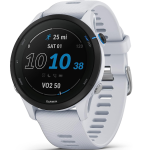- Indoor bike trainers let you smoothly replicate the outdoor riding experience at home, allow you to reliably train all year long.
- We tested and rounded up a number of models that were easy to use and set up, work with a variety of bike styles, and have proven to perform well.
- Our top pick, the Elite Direto 2 Interactive Smart Trainer, is a lightweight trainer that works with popular training apps and is intuitive to set up and ride.
With an indoor bike trainer, I’m able to simulate what it’s like to ride outdoors whenever the weather turns particularly nasty – or for when I just don’t feel like throwing on my rain gear. Even if it is nice outside, it allows me to get in a quick workout before or after work, or whenever I have a few minutes to spare but not enough time for a full-on ride.
They’re also an excellent alternative to the expensive at-home stationary bikes offered by brands like NordicTrack or Peloton. While those deliver a highly interactive experience, indoor bike trainers put the onus of the workout on the rider. There are no instructors motivating you along the way or any tablet-sized monitors displaying your stats; it’s just you, your bike, and the trainer – and some cyclists prefer it this way.
The following guide features trainers I found to be easy to use, that are compatible with a variety of bike types, and have a track record of performance. When shopping for a trainer, make sure the model you ultimately purchase works with your specific bike. If not, you may need to buy additional parts.
At the end of this guide, I’ve included some tips on how to shop for an indoor bike trainer, as well as a rundown of how I tested each bike trainer and a few additional trainers I tested that didn’t quite make the cut.
Here are the best indoor bike trainers:
- Best indoor bike trainer overall: Elite Direto 2 Interactive Smart Trainer
- Best smart indoor bike trainer:
- Best direct drive indoor bike trainer: Unisky Direct Drive Bike Trainer
- Best entry-level bike trainer: Wahoo Fitness Kickr Snap Bike Trainer
- Best budget indoor bike trainer: Saris CycleOps Fluid2 Indoor Trainer
Amazon
The Elite Direto 2 Interactive Smart Trainer provides an optimal balance of performance (with and without inclines), and an attractive price.
Pros: Accurate, lightweight, affordable, easy to set up, great for hill climbs
Cons: Runs loud, several features are only available through in-app purchases
The Elite Direto 2 Interactive Smart Trainer uses an optical torque sensor (OTS) power meter to accurately measure power within 2% of the actual output. This combined with Direto’s pedal analysis options helps you optimize your training. The smart trainer can also simulate inclines up to 14%. Wireless connectivity is through Bluetooth and ANT+ FE-C, and it’s compatible with Windows, macOS, Android, and iOS.
In our research, the only difference we could find between the Direto and the Direto 2 is that the newer version comes with a trainer block and features a slight internal upgrade for accuracy. The two are so similar that the Direto 2 sometimes gets delivered in the same box as the Direto and is simply labeled “Direto” without the “2.”
Best smart trainer
Amazon
If you’re willing to spend a little extra for a trainer that closely captures the feel of riding on the road, the is your best bet.
Pros: Excellent performance, accurate power meter, realistic road feel, runs quietly, works with several apps, two-year warranty
Cons: No-carry handle, complaints about the pedal analysis features, connectivity issues with the Tacx app
The features dynamic inertia, which compensates for incline, speed, and weight to provide a smooth and realistic ride feel. It’s even able to simulate acceleration on descents or riding over gravel and cobblestones.
Tacx focused on creating a silent trainer that keeps you and your bike completely still while mounted — a much-needed perk for cyclists who live in apartment buildings. The trainer also closely monitors the position of each leg to achieve a more precise pedal analysis.
The can simulate climbs up to 25% and resists sprints up to 2,200 watts. Tacx backs the quality of this product with a two-year warranty.
Best direct drive trainer
Amazon
The Unisky Direct Drive Bike Trainer is a wheel-off trainer that delivers a smooth and stable ride experience and uses noise reduction fluid to keep whisper quiet.
Pros: Smooth, stable ride, use of noise reduction fluid makes it one of the quietest trainers available, compatible with road and mountain bikes
Cons: Cassette not included
Unisky’s Direct Drive Bike Trainer just might be the quietest trainer in this guide, using noise reduction fluid to produce a near-silent ride every time. The stable base and durable construction allow each ride to feel steady, no matter if you’re riding a road bike or a mountain bike (of which it’s compatible with both).
This trainer easily folds up when not in use, making it highly portable and easy to stow, and the rubber nubs on each leg allow it to stay stable even if it’s placed on an uneven surface. At $429, it also won’t break the bank.
Best entry-level trainer
REI
The wheel-on design of the Wahoo Fitness Kickr Snap Bike Trainer provides app-controlled resistance, is compatible with both Bluetooth and ANT+, and offers incline up to a 12% grade.
Pros: Realistic road feel, pairs seamlessly with several apps, great customer service, one-year return policy
Cons: Advanced riders may want to look elsewhere
The Wahoo Fitness Kickr Snap Bike Trainer is designed to bring the outdoor riding experience indoors. Its wheel-on design accommodates road and mountain bikes, and app-controlled resistance lets you dial in exactly how hard of a ride you want.
This trainer also uses Bluetooth and ANT+ compatibility, is made of durable carbon steel, and can adjust its incline up to a 12% grade to better simulate climbing hills. It also delivers quiet performance and easily folds up for stowing in a closet or taking with you on the road.
The device is backed by REI’s 100% satisfaction guarantee, too, meaning you get up to 90 days to return it if you’re not satisfied.
Best budget trainer
Amazon
The Saris CycleOps Fluid2 Indoor Trainer is an affordable option if you don’t need smart connectivity but still want an indoor ride.
Pros: Affordable, heavy-duty construction, excellent customer service, lifetime warranty
Cons: No smart connectivity, not easily portable
Before the recent surge in smart trainers, the Saris CycleOps Fluid2 Indoor Trainer was at the top of the heap. This heavy-duty beast features a 2-inch-round, 16-gauge steel frame made of 100% recyclable, nonrusting materials in the United States.
The trainer comes with a steel quick-release skewer, and the 2-inch resistant roller fits a wide array of road and mountain bike wheel sizes. CycleOps backs the quality of its trainer with a lifetime warranty, too.
What else we considered
Amazon
When researching this guide, we considered several models of bike trainers, and there are a few we almost included. The following two trainers barely missed the cut:
($429.99)
The Omnium is unique because you remove your front wheel, attach it to the stand, and your back wheel rests on two 4-inch magnetic drums that supply progressive resistance. This set also comes with a travel bag that fits in an airplane overhead bin.
Kinetic R1 Direct Drive Smart Trainer ($749.00)
Kinetic by Kurt is one of the top names in the bike trainer industry, and the R1 is its high-end direct drive trainer. It features compatibility with popular training apps, a 20% max slope, and a 2,000-watt max resistance at 30 mph. However, it’s relatively new so the verdict is still out.
How to shop for an indoor bike trainer
However, they’re no longer popular as modern trainers offer a more advanced and effective approach. Though most of today’s trainers simply hold the bike in place, there is some variation. Here are the types of trainers you’ll come across:
Friction trainers: Friction trainers used to be the go-to bike trainer (emphasis on used to). This type of trainer supplies fluid- or magnetic-resistance to the rear wheel via a small roller.
Direct drive trainers: Overtaking friction trainers were direct drive trainers. With these, you remove your back wheel and attach the rear dropout to the trainer — they require a cassette compatible with your bike, too. Direct-drive trainers offer the highest level of resistance and are often the most accurate. They also happen to cost the most. Direct-drive trainers are smart, too, which means you can connect them to a mobile device and whatever virtual riding apps you use. You can control the resistance yourself or have it adjust automatically.
Fluid trainers: Direct-drive trainers aren’t the only smart trainers as there are also several fluid trainers with Bluetooth or ANT+ connectivity. Even if you choose a non-smart trainer, you’re still able to purchase accessories to make it smart. For instance, the Garmin Bike Speed Sensor 2 and Cadence Sensor 2 bundle provides you with valuable data when riding outdoors.
How we test indoor bike trainers
Each of the bike trainers featured in this guide went through a series of cycling tests to see how well they performed when judged against these four categories: Ease of use, ride experience, features, and value. Here’s how we considered each category during testing:
Ease of use: Since an indoor bike trainer requires you to attach your actual bike to it, you’ll ideally want one that’s straightforward to use and set up — the last thing you want is for it to fall apart or for your bike to become unattached while riding. We looked at how easy each trainer was to assemble out of the box, as well as how much tinkering they required to get the bike attached just right. Thankfully, the guide features trainers that were all highly intuitive.
Ride experience: Regardless of whether you want to crank up the resistance or are just hopping on for a leisurely afternoon ride, you’ll want the trainer to deliver a smooth ride every time. To judge this, we rode each of them both casually and aggressively (oftentimes in the same session) to see if there was any difference in output. Some, where noted, certainly offered a more consistently smooth ride than others.
Features: The smart trainers featured in this guide get a bit of a leg up here but even the standard trainers we tested offered everything from resistance control to the ability to change the incline. The most basic of bike trainers let you just attach your bike and ride away but those that offer a deeper well of features allow you to hone in on exactly how you want to cycle.
Value: Some of the bike trainers featured in this guide carry a relatively steep asking price, though their inherent value is more than just how much they cost. Of course, it’s ideal to both spend as little as possible while still getting something considered high-quality, so value truly comes down to the combination of the three categories above, as well as if its sticker price is worth the investment.
Powered by WPeMatico






